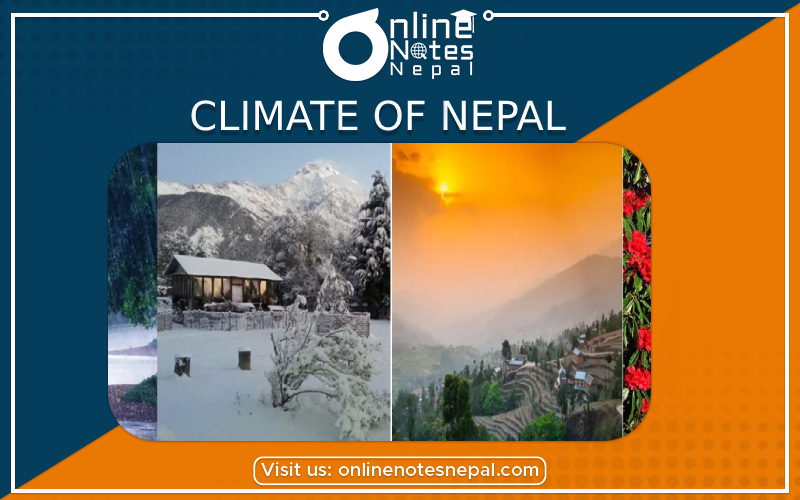Published by: Mandira
Published date: 17 Jan 2022

Nepal lies in the temperate region of the world where sun rays are moderate. On average its climate is tropical monsoon type. It is mostly influenced by the countries elevation that ranges from low-lying flat plain to the world's highest areas. The three geographic regions of Nepal has distinct climatic features according to their attitudinal positions. Broadly Nepal's climate conditions can be divided it two periodic conditions.
During Chaitra, Baishakh and Jyestha- the first three months of the period, it is quite hot except in the highest elevations. It is dry, windy, and hazy due to dust. The temperatures go higher in another three months- Asadh, Shrawan, and Bhadra but are somewhat restrained by frequent rains. The monsoon winds pushes from the Indian Ocean, particularly the Bay of Bengal, when blocked by the Himalayan ranges bring heavy rain in most part of Nepal. It accounts for about 90% of the total yearly rain in the country. Early monsoon reach the eastern Nepal and rainfall amounts decrease as we move to the north or to the west of the country. The far north, lying beyond the high mountains, is a rain shadow area. The east receives more than 200 cm of annual rain but the amount is only the half in the west. The east is also mild due to its closer distance from the sea. It suffers more landslides and floods triggered by incessant rain during these months.
Situations are almost completely opposite in the winter period that lasts from Ashwin to Falgun. It gets increasingly colder for the first four or five months. Weather is dry. The winter monsoon winds from inland region in the central Asia are dry and can't cause rain as they lack enough moisture. The temperature measure about 10-18° in the Terai and go on decreasing towards the north. Normal average temperature falls below 0° Celsius in the Himalaya region. Though not in high amount, the western part of the country receives more rain than the east. It is caused by the moist westerly winds coming from Mediterranean Sea, Black Sea, Persian Gulf, etc. in winter there is a lot of snow fall in the high elevations.